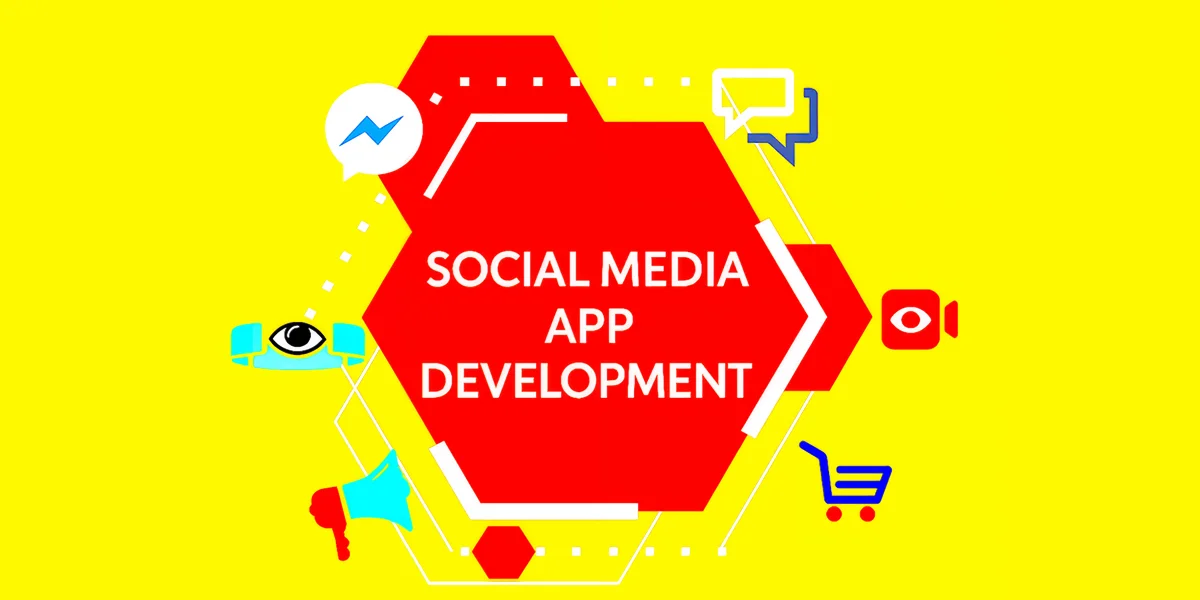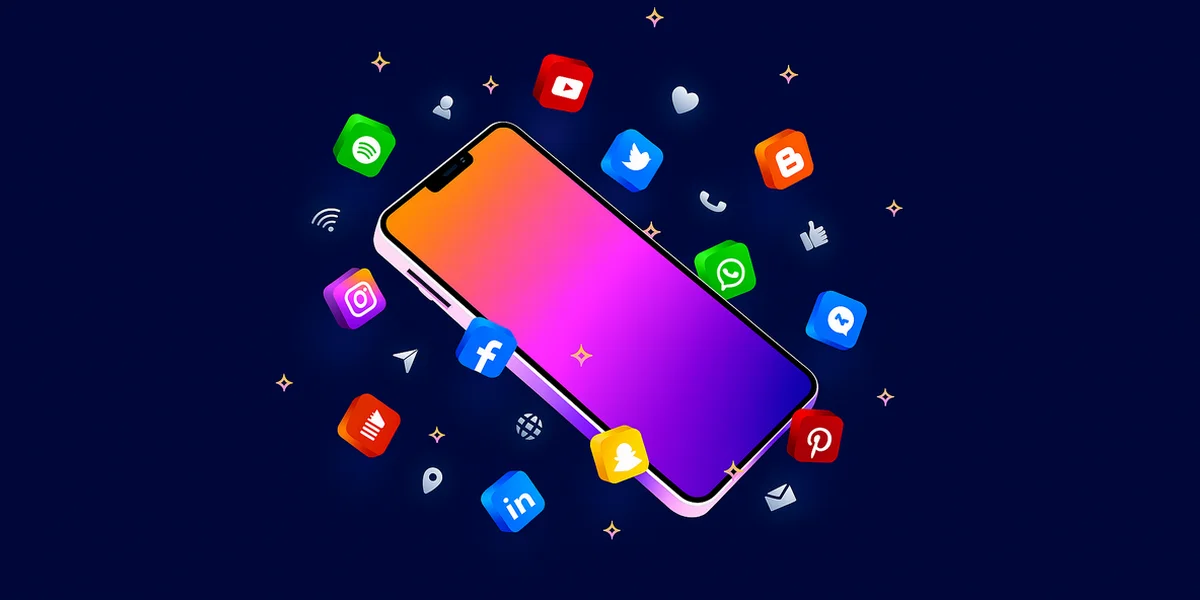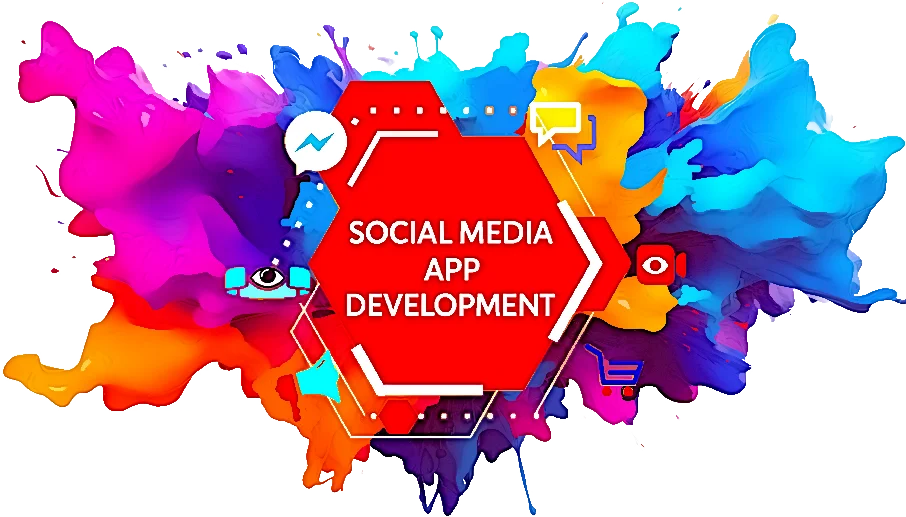Social media app development is a complex and multi-faceted process that requires careful planning, execution, and a deep understanding of user behavior and market trends. To create a successful platform that attracts and retains users, developers must focus on a unique value proposition, a robust feature set, and a well-defined monetization strategy…
The Social Media App Development Process
The journey from an idea to a fully launched social media application involves several critical stages, often following an Agile development methodology for flexibility and continuous feedback.
1. Ideation and Strategy
The first and most crucial step is defining your app's core concept and strategy.
· Market Research & Niche Selection: The market is saturated, so you must identify a market gap and define a unique selling proposition (USP). Determine the type of app you're building (e.g., professional networking, video sharing, niche community) and study your direct and indirect competitors.
· Target Audience & User Personas: Define your ideal users, understand their needs, pain points, and what value your app will offer them. This guides all subsequent design and feature decisions.
· Business Model & Monetization: Decide early on how the app will generate revenue. Common models include advertising, subscriptions, and in-app purchases.
2. Planning and Design
This stage translates the strategic vision into a concrete plan and a visual structure.
· Platform Selection: Choose the platform(s) for your app (iOS, Android, or both). This choice impacts the necessary tech stack.
· Tech Stack Selection: Select the appropriate programming languages, frameworks, databases, and servers. For a scalable social media app, common choices include React Native or Flutter for cross-platform, Node.js or Python for backend, and cloud services like AWS or Google Cloud.
· Wireframing and Prototyping: Create a structural blueprint (wireframes) and interactive mock-ups (prototypes) of the app's user flow.
· UI/UX Design: Develop an intuitive, engaging, and visually appealing User Interface (UI) and User Experience (UX). The design should be trendy, accessible, and align with your brand identity.
 3. Development and Testing
3. Development and Testing
This is where the code is written, and the app is brought to life.
· MVP Development: Start by building a Minimum Viable Product (MVP) with only the core, essential features. An MVP allows for faster launch, testing with real users, and gathering early feedback. Essential features include secure login, user profiles, and basic content sharing.
· Front-End and Back-End Development: Front-end developers focus on the user-facing side (what users see and interact with), while back-end engineers build the server-side logic, databases, and APIs to ensure scalability and data security.
· Testing and Quality Assurance (QA): Rigorous testing is mandatory to ensure the app is secure, bug-free, and performs well under heavy load. This includes functional testing, usability testing, performance testing, and security testing.
4. Deployment and Maintenance
The final steps involve launching the app and preparing for its future growth.
· Release and Launch: Submit the app to the Apple App Store and Google Play Store, adhering to their guidelines.
· Marketing and Promotion: Implement a strategy to attract the first wave of users.
· Monitoring, Feedback, and Updates: Continuously monitor user behavior and app performance using analytics tools. Gather user feedback to inform iterative development cycles, adding new features and improving existing ones.
Essential Features: What Makes a Social App Work
To cultivate a successful online community, your app must provide a seamless and engaging experience through a robust set of features, categorized as follows:
· User Management: This foundation includes Secure Login/Signup (offering multi-option registration via email, phone, or existing social media) and User Profiles (customizable spaces where users can share personal data, photos, and bios, supported by customizable privacy settings).
· Content & Interaction: The core of social networking. Users need an easy way to enable Content Sharing for various media (text, photos, videos) and consume it via an appealing News Feed/Timeline, which can be chronological or algorithmic. Audience Interaction features like "likes," comments, sharing, and reactions are crucial for fostering engagement.
· Communication: Fostering connections requires direct interaction. This must include In-App Messaging for private chats (DMs), and optionally, group chats or video/voice calls. Real-Time Notifications (push notifications) are vital for alerting users to new activity and driving re-engagement.
· Discoverability: Users must be able to find people and content. A robust Search and Filter functionality helps users locate other people, specific posts, and relevant Groups and Communities based on shared interests.
· Advanced Features & Trends: To stay competitive, consider integrating forward-looking features like AI Integration (for personalizing the news feed and content recommendations) and Enhanced Video Content (e.g., live streaming, short-form video tools). Finally, a strong emphasis on Security and Moderation—including account recovery, password management, and automated content moderation—is necessary to ensure a safe environment.
 Key Monetization Strategies
Key Monetization Strategies
A profitable social media app requires a diverse and sustainable revenue model that doesn't significantly detract from the user experience.
1. Advertising (Ad-Based Model)
This is the most common model, leveraging the app's large user base and data.
· In-App Advertising: Displaying banner, native, or interstitial ads to users based on their demographics and interests. Revenue is generated through impressions or clicks (PPC/PPM).
· Sponsored Content: Partnering with brands for sponsored posts or promotions that blend seamlessly into the content feed.
2. Subscriptions and Premium Access
Offering enhanced features or an ad-free experience for a recurring fee.
· Subscription Model: Charging a monthly or yearly fee for premium features (e.g., advanced analytics, custom badges, exclusive content, or an ad-free experience). Examples include "X Premium" or "Meta Verified."
3. In-App Purchases (IAP)
Allowing users to buy virtual goods or benefits to enhance their experience.
· Virtual Goods: Users can purchase virtual items like emojis, stickers, gifts for other users, or custom profile decorations.
· Gamification Elements: Buying "boosts" or "promotions" to increase the visibility of their posts or profiles.
4. E-commerce Integration and Transactions
Facilitating commerce within the app.
· Social Commerce: Integrating a marketplace or shopping features that allow businesses to sell products directly to consumers without leaving the app.
· Transaction Fees: Taking a percentage cut on any financial transactions that occur within the app (e.g., booking services, ticket sales).
5. Data Monetization
If the app reaches significant scale, its anonymized, aggregated user data can be a valuable asset.
· Data Licensing: Licensing non-personal, aggregated user data (e.g., market trends, popular topics) to third-party businesses or researchers for analysis.
Conclusion
Ultimately, the most successful social media app development projects are those that strategically blend robust core features, a unique value proposition, and a carefully balanced monetization model to foster a thriving and engaged community.
Read more in our blog…

